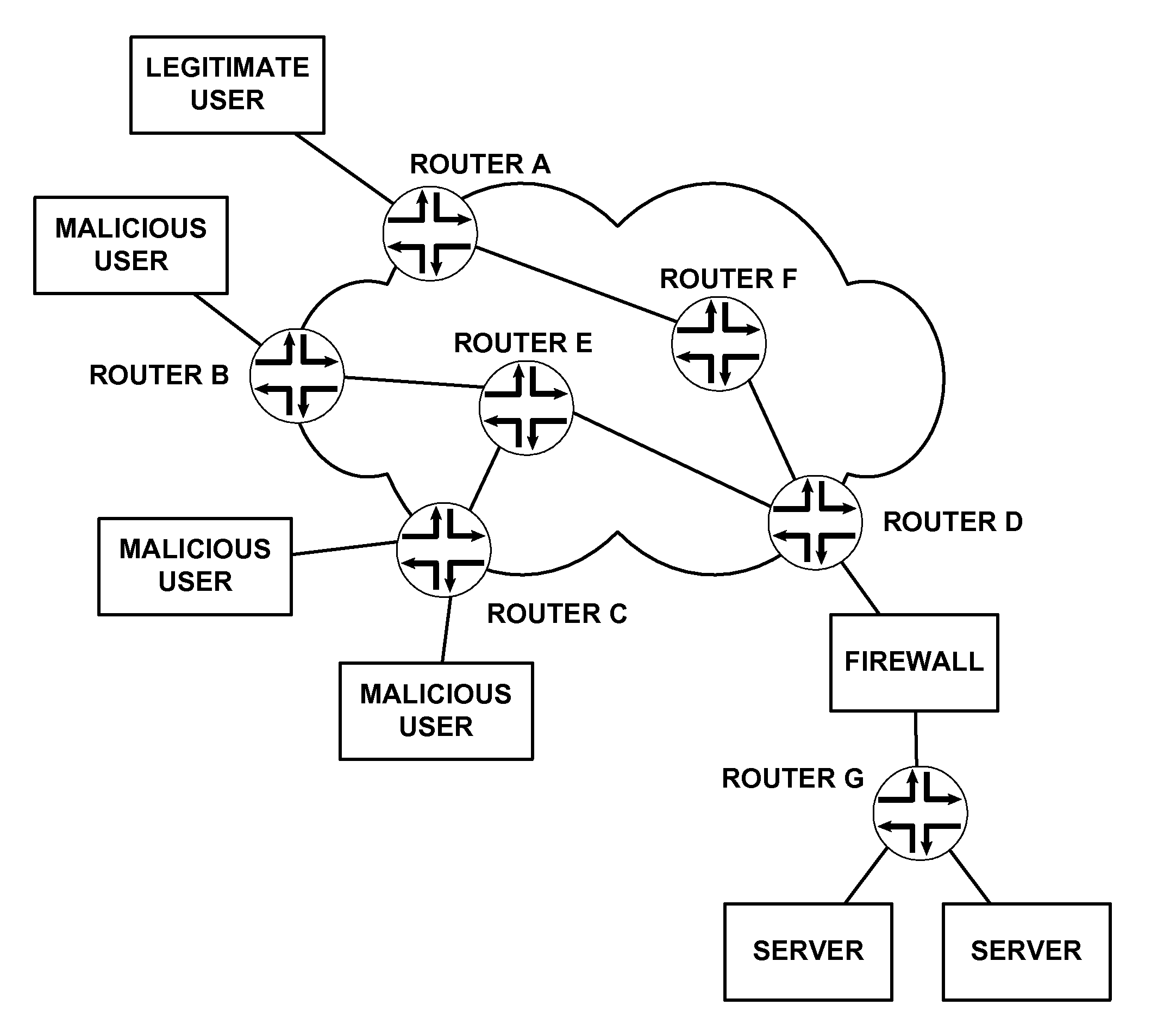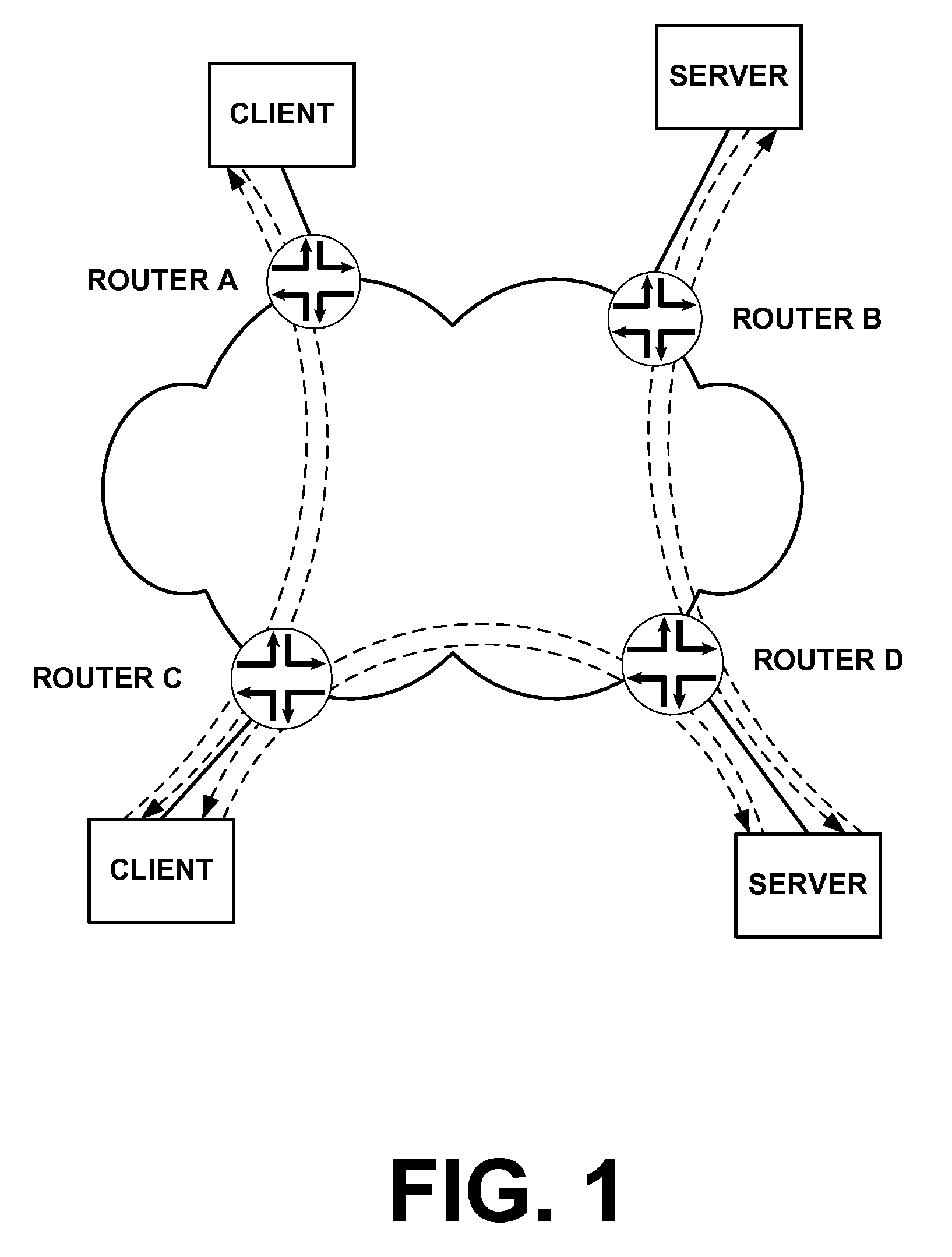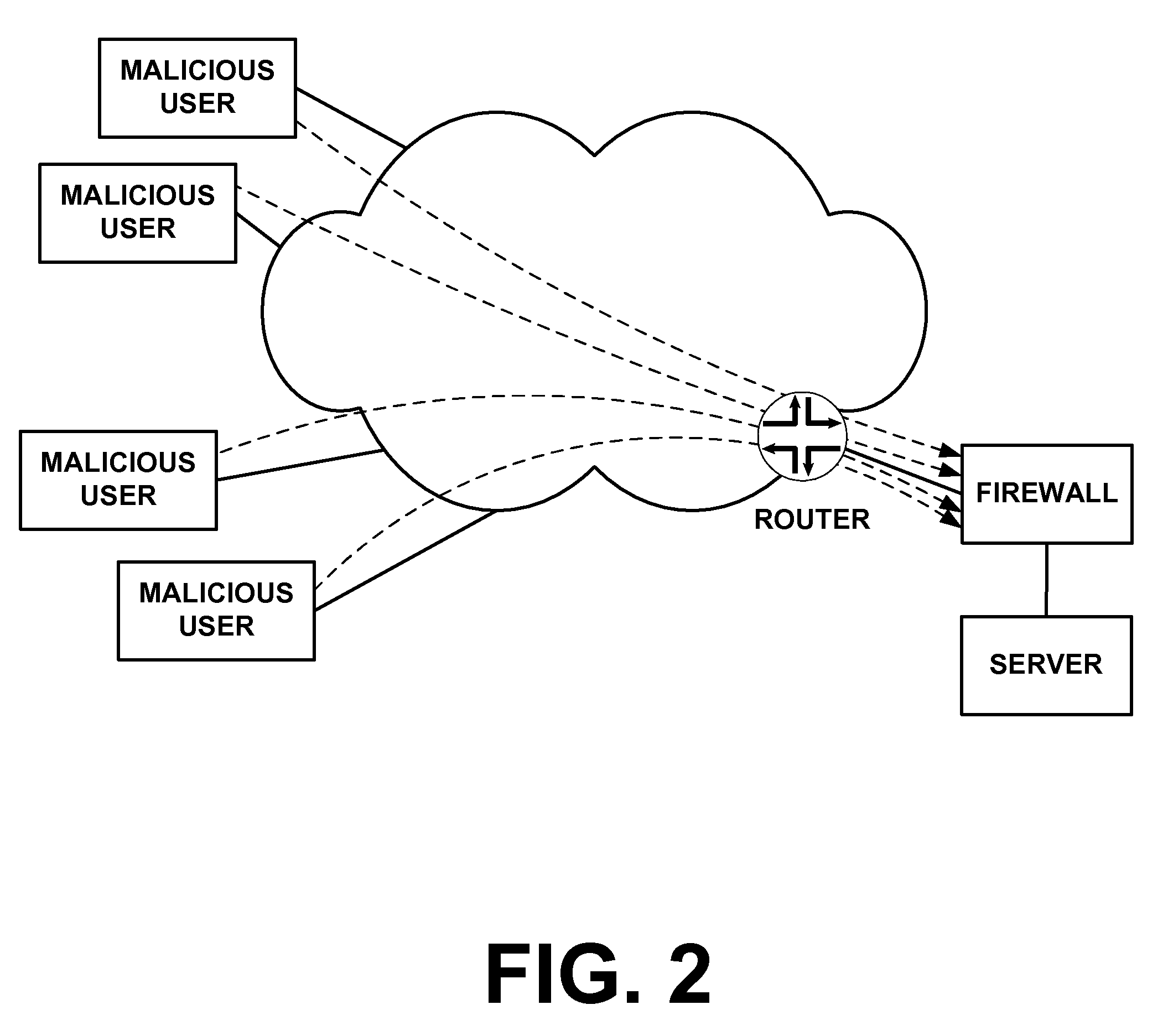Rate limiting data traffic in a network
a data traffic and network technology, applied in the field of data processing systems, can solve the problems of limiting network access to only employees, network access restrictions in certain ways, and the rate at which every server can respond to requests for services is limited
- Summary
- Abstract
- Description
- Claims
- Application Information
AI Technical Summary
Benefits of technology
Problems solved by technology
Method used
Image
Examples
management embodiment
Central Management Embodiment
[0130]FIG. 12 illustrates a distributed filtering system using a central management system consistent with the principles of the invention. The distributed filtering system of FIG. 12 includes a physically separate firewall as well as a server configured with a firewall 1202. Each firewall participates in detecting an attack. In response to detecting an attack, or some sort of indication of an attack, each firewall creates attack information defining what has been detected regarding the attack, and sends the attack information to router D and central management system 1210. The attack information may come from one or both of the firewalls.
[0131]Central management system 1210 receives the attack information and uses the information to assist in coordinating a response to the attack. For example, central management system 1210 may forward the attack information directly to routers B and C, the routers connected to malicious users. Central management system...
PUM
 Login to View More
Login to View More Abstract
Description
Claims
Application Information
 Login to View More
Login to View More - R&D
- Intellectual Property
- Life Sciences
- Materials
- Tech Scout
- Unparalleled Data Quality
- Higher Quality Content
- 60% Fewer Hallucinations
Browse by: Latest US Patents, China's latest patents, Technical Efficacy Thesaurus, Application Domain, Technology Topic, Popular Technical Reports.
© 2025 PatSnap. All rights reserved.Legal|Privacy policy|Modern Slavery Act Transparency Statement|Sitemap|About US| Contact US: help@patsnap.com



